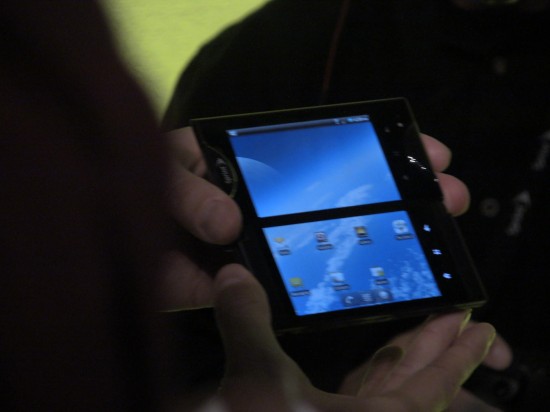Kyocera Echo Hands-On and First Impressions [Video]

I have mixed feelings about the Kyocera Echo. It’s dual-screen design is actually pretty clever — a lot like the NEC dual-screen tablet we saw at CES — but something about it doesn’t scream “your next Android device.” Maybe it’s the Kyocera name tag and the history of disappointment that goes along with it. Maybe it is the fact that the two screens come off more gimmicky than anything. But really it has a whole lot to do with the fact that the touted technology isn’t across the whole system. Only certain applications built with Kyocera’s multi-tasking dual-screen APIs really benefit, and in the case of the Echo this includes only core apps right now.
As it is, regular apps will display across both screens or in single-screen mode. Core apps like mail, the gallery, and the browser can be set into dual-app mode using a gesture across both screens, or they can function in special modes designed to utilize both swaths of screen real estate individually. A cool concept that ultimately gets bagged down by the Echo’s lack luster performance. Sure, a 1GHz Snapdragon sounds good on paper but it just isn’t humming like it should in this device.
We’ll give the hardware some style points. It doesn’t look half bad and remains a pretty manageable form-factor despite the two screens. This is thanks to a specially designed hinge mechanism. But the benefits of a two screens are also their downfall. Admitting battery life is going to be an issue, Sprint is stocking every owner of the Echo with a backup battery and charging brick to combat excess drain caused by two glowing displays.
So my mixed feelings remain, but we like where this could go. If Android had some of this functionality built into its core to encourage more manufacturers to create dual-screen devices it might be something worth getting excited about, but as a system solely devoted to Kyocera’s product, we don’t see it catching on.